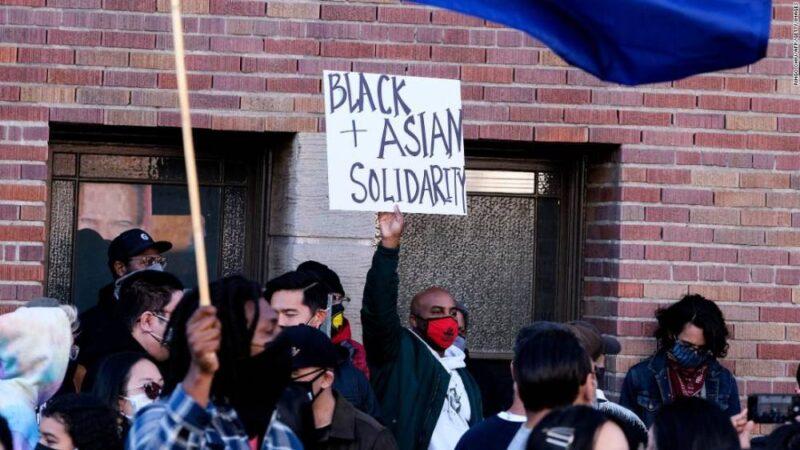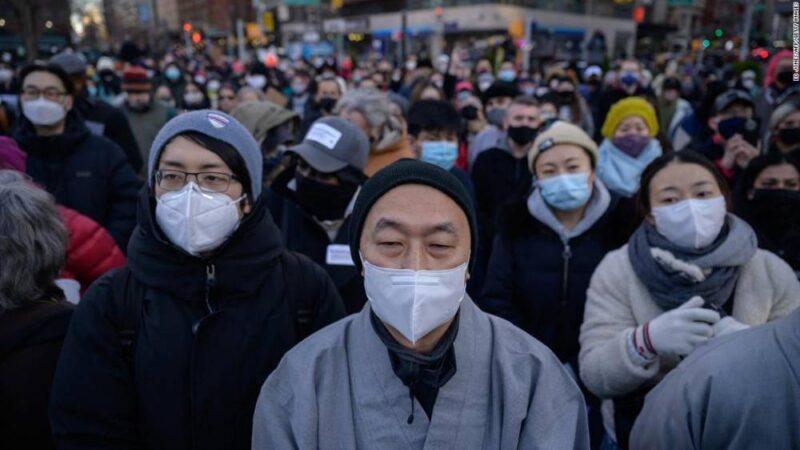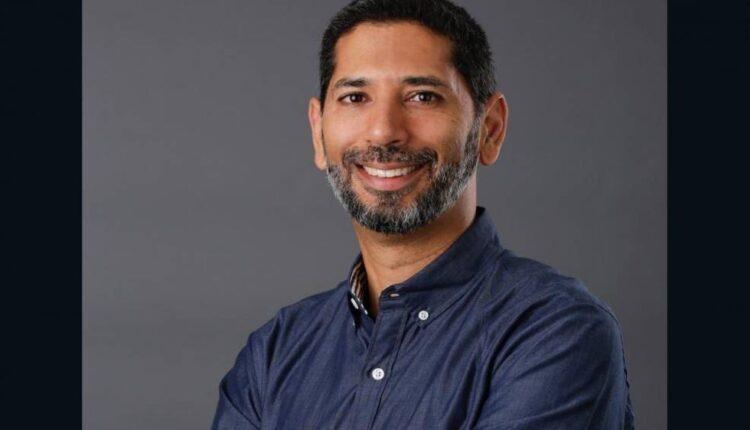Pawan Dhingra is a professor of American Studies at Amherst College and author of Hyper Education: Why Good Schools, Good Grades, and Good Behavior Are Not Enough and co-author of Asian America. The views expressed in this commentary belong to the author. View more opinion at CNN.
(CNN)It seems we cannot go a week without another tragic, high-profile episode of violence and harassment against Asians and Asian Americans. On Tuesday, six women of Asian descent were shot and killed in the Atlanta area, sending shockwaves throughout the country after months of mounting concerns over anti-Asian violence during the coronavirus pandemic.

Pawan DhingraStop AAPI Hate, which has been tracking violence and harassment against Asian Americans and Pacific Islanders since March 19 of last year, received 3,292 complaints in 2020. In the first two months of 2021, the organization logged another 503 reports.
But the federal response is woefully inadequate when it comes to preventing violence against Asian Americans. In order to effect lasting and meaningful change, we need an educational campaign starting in K-12 schools that reveals the strength and complexity of Asian Americans — just like any humans. People’s lives depend on it.
At the heart of anti-Asian American racism is the assumption that we are foreign and “other,” rather than “our fellow Americans,” to use President Joe Biden’s language. This is why Asian Americans face constant questions about where we are from, get complimented for speaking English, and presented with unsolicited details about people’s trips to Asia. Current federal initiatives will not address this fundamental misconception, though the Department of Justice is making a concerted effort to combat hate crimes against Asian Americans, while two congresswomen have introduced a bill to expedite the review of hate crimes related to the pandemic. But these efforts, in many ways, are akin to chasing the wind. They are largely focused on dealing with crimes after they are committed. To create change, we must blow back in the other direction. The most effective way is through education. Read MoreMost Americans are taught little about Asian Americans, the fastest growing racial or minority group in the country — and a diverse one at that. The arrival of Asian immigrants to what would eventually be called America dates back to the 1500s, and the phrase “Asian American,” which was coined in the 1960s, encompasses more than 20 million people with dozens of distinct ethnic identities. And yet, what kids are taught in school is often limited to the arrival of Chinese immigrants in the 19th century and the internment of Japanese Americans during WWII. Popular media, which continues to mock and misrepresent Asian Americans, fills in the gaps.

Black-Asian solidarity has a long and storied history in AmericaEducation needs to go beyond the bare resources offered for Asian American Heritage Month every May. The US Department of Education can provide grants for schools to teach on Asian America. Currently, a push to include Asian American history in school curriculums is already occurring at the state level in places like California and Connecticut. But teachers across the country should routinely incorporate Asian Americans into their existing lessons to show how they are part of the American story. This means celebrating their achievements as well as examining their flaws. For example, when discussing the history of workers’ rights, lesson plans can include how Filipino-American farmworkers joined with Mexican-Americans to create the United Farmworkers Union in the 1960s, and engaged in the successful boycott of the California grape industry. These contributions to labor activism continues today. Ai-Jen Poo, for example, led the effort to pass the pioneering Domestic Workers Bill of Rights, which provides paid sick days, overtime pay, and other protections for domestic workers in nine states. At the same time, students can learn that where one stands on labor issues often depends on one’s occupation—just as with any American. Asian American business owners, for example, have helped and promoted fellow Asians-Americans. But they have also, in some instances, been fined for mistreating fellow Asian American employees through wage theft and unsafe working conditions. Teachers also can incorporate Asian American activism in discussions of the civil rights movement. Most well-known is Yuri Kochiyama, an activist who worked with Malcolm X and was famously captured in photographs kneeling by his side when he was shot and killed. Today, Asian American activists are standing up for Black Lives Matter. These examples show that racial progress has often involved multi-racial coalitions.

Being Asian American means living in a country that treats you as a perpetual foreigner. That has to change And still, teachers should not shy away from talking about tensions that have at times affected Asian-American and Black communities—instances, for example, of anti-Black racism among Asian Americans– in more nuanced lessons on race relations. In 1991, long-simmering clashes between Korean Americans and Black Americans in Los Angeles came to a head when a Korean store owner fatally shot Latasha Harlins, a 15-year-old African-American girl, after accusing her of trying to steal a bottle of orange juice. When the LA Riots broke out a year later after four White police officers were acquitted in the beating of Black motorist Rodney King, Korean-owned businesses sustained significant damage.In sharp contrast to President Trump’s 1776 Commission, which recommended federal agencies “promote patriotic education,” schools should be advised to teach on white supremacy and its relationship to Asian America. This can include the history of racist legislation, like the Page Act of 1875 or the Chinese Exclusion Act and the origin of stereotypes like the model minority myth that is used to pit Asian Americans against Black Americans and other groups. Only then can racist attitudes begin to be challenged. History lessons of military ventures such as the Korean or Vietnam War could be used to explain waves of migration, which could help students understand that for many immigrants, the phrase, “We are here because you were there” rings true.
Students should also realize how white supremacy works in subtle ways, including inside school walls. When Asian American students excel over White students, too often they are chastised by educators for working too hard. Yet when White students outperform students of color, the reaction is the opposite and some teachers may place the blame on the students of color, or their parents. The “hidden curriculum” in many schools can also reinforce racism and racial stereotypes, which benefits White students and puts immigrants and students of color at a disadvantage.Get our free weekly newsletter
Sign up for CNN Opinion’s new newsletter.
Join us on Twitter and Facebook
There is no single story to tell about Asian Americans — a group that is too often seen as a monolith. Without robust educational efforts, the federal government cannot live up its own expectations in addressing anti-Asian American racism.
Source: edition.cnn.com

